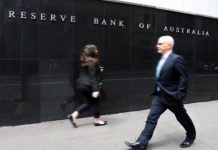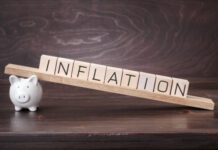Markets
Inflation remains ‘talk of the town’ after US prices last week were reported rising at the fastest pace in more than 30 years. Even if, as a central banker, you are convinced that most of this rise is temporary, this feels uncomfortable. A precautionary approach suggests that it would be safe to remove some of current extreme policy accommodation. That was exactly what markets concluded with higher US short-term rates and a flattening of the curve. At the same time, Friday’s consumer confidence showed inflation becoming the major obstacle for growth. Question is whether those consumers will be happy with (sharply) higher rates to address the erosion of their spending power. The dilemma for centrale bankers probably can’t be bigger. This week, the focus, at least in the US, will turn from inflation to growth. October US retail sales (tomorrow) are an interesting pointer. Today, the Empire manufacturing survey provided some comfort. The headline sentiment index jumped from 19.8 to 30.9. Price indices continue accelerating, but for now this hasn’t much further negative implications for output or employment. Still firms are becoming less optimistic on the expectations six months ahead. Yields rebounded modestly after the report. US yields hover between little changed (2-y) and +3.5 bps. Short-term yields (2-y at 0.51%) stay within reach of recent post-corona peak. Low real yields (10-y at -1.18 %) illustrates persistent uncertainty on growth and hamper sustained upside for LT yields. In Europe, yields initially declined modestly. In a hearing before the European Parliament, ECB’s Lagarde still didn’t see the need for any precautionary action on inflation and repeated that worn-out narrative that inflation will drop back below 2.0% as supply bottlenecks unwind. According to the ECB president any tightening ‘would begin having an impact at a time when inflation is actually returning to lower levels’. However, a Lagarde-driven decline in yields (if any) was reversed during the US session. European/German yields currently rise between 2.5 bps (2-5-y) and little changed (30 -y). Intra-EMU spreads tightening marginally (-2 bps Greece).
Changes in the major FX cross rates are limited, but investors see no reason to fight the protracted, by default accent of the USD. The DXY index is holding north of 95.00. EUR/USD is drifting further south in the 1.14 big figure (1.144) after breaking 1.1495 last week. USD/JPY is trading little changed near 114. Sterling shows a mixed picture. Cable (1.3425) trades slightly off last week’s low, but EUR/GBP (0.8525) eases back lower in the 0.85 big figure on broader euro softness. At the time of writing, BoE’s Bailey, Pill, Saunders and Mann are explaining monetary policy before the UK Parliament. Bailey repeats that labour market conditions are key.
News Headlines
Swedish inflation in October rose a faster-than-expected 0.2% m/m or 2.8% y/y. Headline inflation with a fixed interest rate (CPIF) sprinted higher as well to 3.1% y/y (3% expected), surpassing 3% for the first time since 2008. Core CPIF – the Riksbank’s preferred gauge – came in at 1.8%, beating a 1.6% consensus. Rising inflationary pressures mark a stark contrast with the Riksbank’s pledge of zero-policy rates until 2024 at least, arguing that the current price surge is largely transitory. The Riksbank holds a policy meeting on November 25. The inflationary pressures recently propelled short-term SEK interest rates as markets’ conviction of ever-low policy rates wanes. The 2y inches a few bps higher The krone gains marginally. EUR/SEK 10.00 is being tested.
According to officials familiar with the matter, the ECB is conducting PEPP with an operational ceiling of just under 50% of each country’s debt. It was already obvious that the central bank bought considerably more outstanding debt than the 33% maximum that applies for the ECB’s longer-standing APP but it was never disclosed what the actual cap is. The ceiling for supranational debt (eg. bonds issued by the EC) stands at 60% vs 50% in APP. The officials added that the info featured in a recent Governing Council presentation that examined how much buying space the ECB still has. This in turn was part of the buildup of important discussions the ECB will have in December on the future of its bond purchases when PEPP ends in March 2022.












